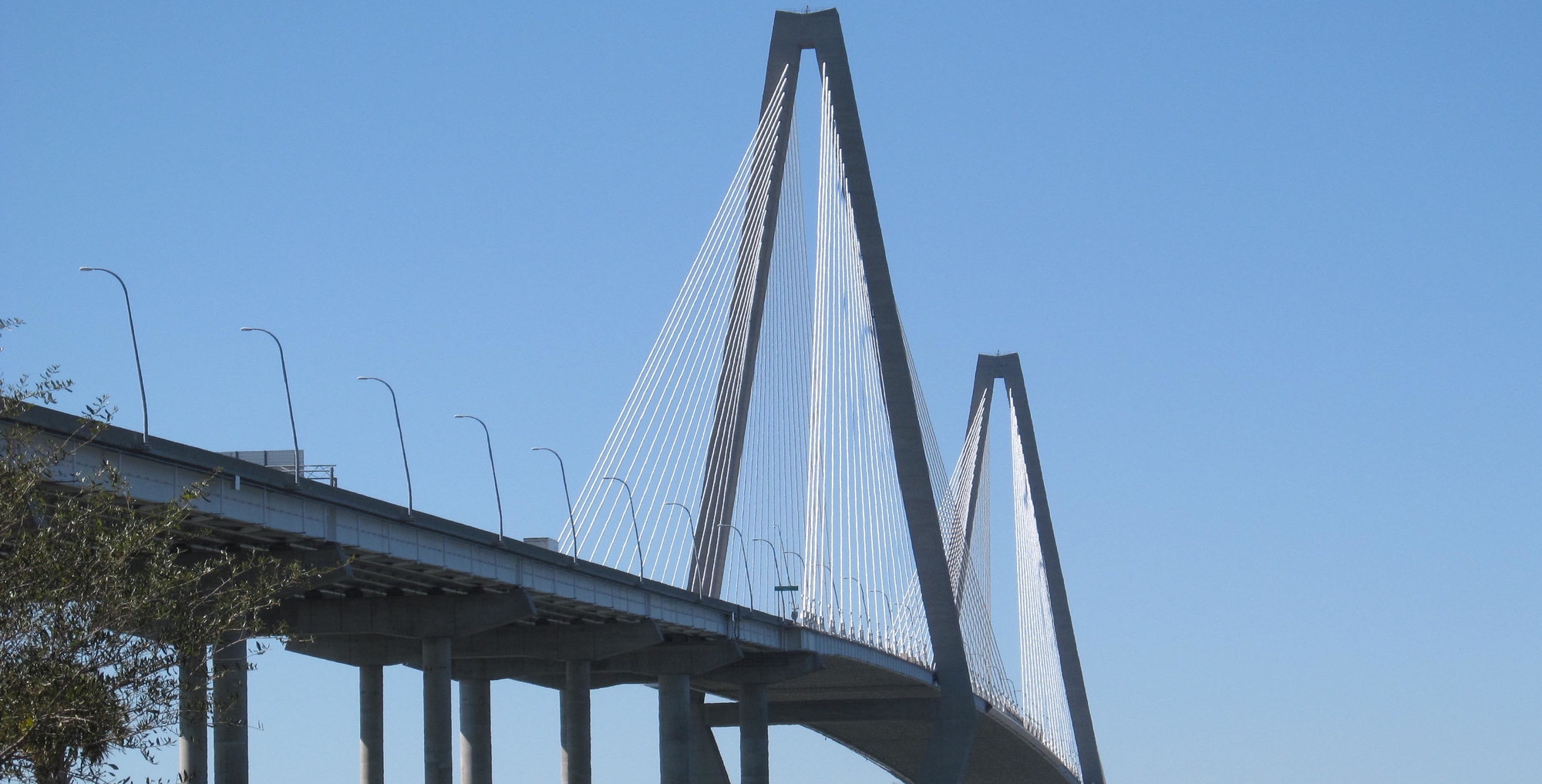Image credit: The Arthur Ravenel, Jr. Bridge on US Highway 17 in Charleston, S.C. Photo by Doug Kerr, CC BY 2.0, via Flickr.
Known for its beautiful beaches, Charleston-style architecture, and award-winning cuisine, many tourists flock to South Carolina each year to experience all the wonderful things the Palmetto State has to offer. But while tourism and population boom, South Carolina’s infrastructure is having a hard time keeping up.
A new report from the South Carolina section of the American Society of Civil Engineers (ASCE) gives the state’s overall infrastructure a D+ rating, with roads scoring a D. This puts the state’s road infrastructure in the “poor” category and underscores the importance of building with quality, longevity and resiliency top of mind.
The ASCE report comes at a pivotal moment for the conversation around infrastructure. Given the poor condition of American infrastructure at large and growing public concern about the impacts of climate change, the infrastructure report card could be a catalyst for states like South Carolina to take bold action. But when it comes to roads, South Carolina faces an uphill battle plagued by a lack of funding, the nation’s highest roadway fatality rate, increasing traffic from tourism and population growth and worsening threats from climate change.
“Unfortunately, the South Carolina Department of Transportation has the fourth-largest state-owned roadway system in the United States,” says Ryan Harvey, P.E., Senior Project Manager at Rowe Professional Services and President-Elect of the South Carolina section of ASCE. “They actually have 63 percent of the public roads in all of the state they have to maintain. And then 50 percent of those roads are actually non-federally funded roads.”
Harvey explains the biggest challenge with improving the state’s roadway infrastructure lies with secondary roads—all non-interstate roads. For the most part, the interstate highways in South Carolina are in good shape, though they need widening. But when only 37 percent of the state’s roads receive federal money, it makes it challenging for the state to secure funding.
Addressing what Harvey says is a $43 billion funding gap over the next 20 years requires a multi-pronged approach and some creative thinking. Raising the state’s gas tax earlier this year will help some, and Harvey sees opportunity in private-public partnerships like the one that The Ray and CORE SC announced in June. The infrastructure report card from ASCE also recommends alternative sources of funding, like a tourism tax.
Decisions in Washington could help close the state’s infrastructure funding gap, as Senate Democrats expect passage of the infrastructure bill at the end of October. The proposed $1 trillion infrastructure bill would come with a $3.5 trillion reconciliation bill to be spent over the next 10 years.
And though Senate Budget Chairman Bernie Sanders has said that dollar amount will likely be lowered, Harvey says the passage of the infrastructure bill could result in up to nearly $5 billion for South Carolina’s infrastructure over the next five years.
“We're looking at a gap of $43 billion over 20 years, and if we're able to get almost $5 billion over five [years], that would be awesome,” Harvey tells Resilient Roadways. “If roads are at a D, and we can put that kind of money into roads in the next five years, we could easily be in the Cs by spending that money where it's needed.”
A lot of that money would go toward basic maintenance and rebuilding pavement, but Harvey sees a big need for making safety improvements and boosting road resiliency in the face of the climate emergency. Seemingly simple changes like adding rumble strips to the white lines near road shoulders could help reduce the number of vehicles that run off the road, and bigger projects like building bioswales would reduce the risk of roadway flooding in heavy downpours.
But as hurricanes start moving slower and dropping more rain, flooding becomes more of an inevitability. For this reason, Harvey says widening highways is a priority for boosting South Carolina’s climate-resilience because it would help with hurricane evacuation efforts.
“The roadways are what carry the services and goods and products around the area. So when a hurricane comes and we have flooding, people can't get out quick enough because the roads need improvement—they need widening. It's a better way to get people out of harm's way.”
You can read the full infrastructure report card for South Carolina here.





Comment